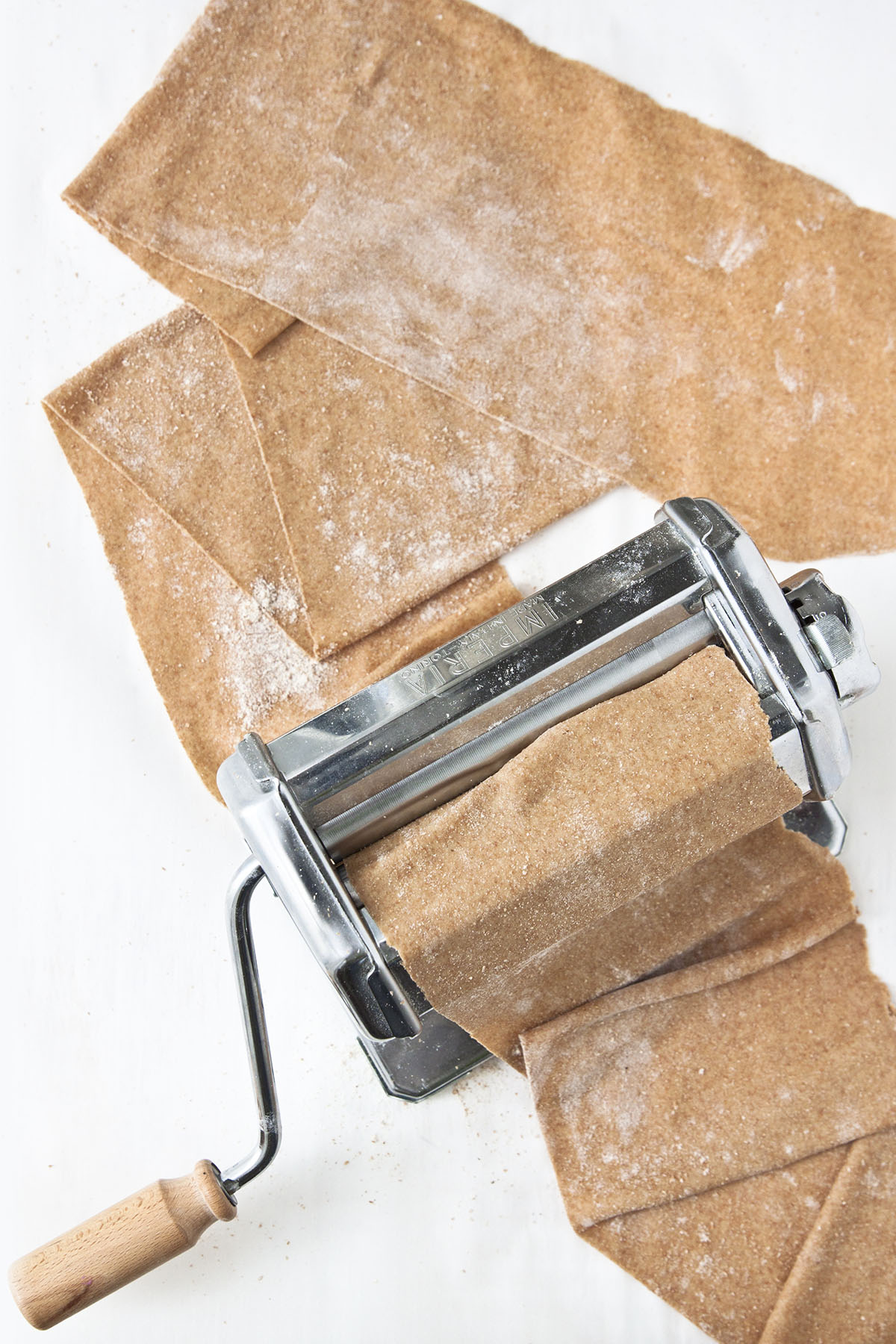Whole Wheat Pasta Dough

Roasted Chicken with Pumpkin Spice Marinade
January 19, 2017
Whole Wheat Graham Cracker Crust
January 19, 2017Whole Wheat Pasta Dough
A seasonal show-stopper—homemade whole wheat pasta is stuffed with freshly roasted pumpkin and topped with squash and fried sage. This dish is one part sweet and one part savory, but perfectly balanced. Try it in small portions for an entrée.

Ingredients
Directions
The measurements for this recipe are in grams. This is because the only way to determine if you have the proper amount of flour is to measure them with a kitchen scale. A kitchen scale is an inexpensive item and you will use it over and over again, especially for baking.
After you’ve measured, mix them up together in a bowl, so that the all-purpose and the whole wheat are incorporated.
Pour the flours onto a clean surface. You can use your counter top, or a large cutting board is fine as well.
Make a well or hole in the center of the flour and pour your beaten eggs in there. The sides of the well will hold them in place.
Using a fork or two of your fingers, start incorporating the flour into the eggs, slowly. Once all the dough is added, you will have a ball of egg and flour. This is a sticky process - don’t worry, you’re doing it right!
Knead this ball of dough with your hands for about ten minutes. The dough should start to spring back when poked with your finger. This means the gluten in the flour is starting to work and is giving the dough strength. This is good! Let the dough rest for 30 minutes, covered with plastic wrap.
After the dough has enjoyed a disco nap, feed the dough into your pasta machine between the rollers at its widest setting. Crank it through at the widest setting THREE times, folding the dough onto itself in thirds after each pass. Then, start narrowing the settings on the rollers until the dough gets very thin. At the final pass, you should have a very thin sheet of pasta.
Place this sheet of pasta on a cutting board and cut out 1 - 1½” squares or circles. You can use a cookie cutter, one of those fancy-pants ravioli cutters or just plain, old knife. Keep it simple. The fewer appliances you have, the less frequently they get caught in your drawers leaving you cursing the day you bought a can opener.
Shop this recipe
Ingredients
Directions
The measurements for this recipe are in grams. This is because the only way to determine if you have the proper amount of flour is to measure them with a kitchen scale. A kitchen scale is an inexpensive item and you will use it over and over again, especially for baking.
After you’ve measured, mix them up together in a bowl, so that the all-purpose and the whole wheat are incorporated.
Pour the flours onto a clean surface. You can use your counter top, or a large cutting board is fine as well.
Make a well or hole in the center of the flour and pour your beaten eggs in there. The sides of the well will hold them in place.
Using a fork or two of your fingers, start incorporating the flour into the eggs, slowly. Once all the dough is added, you will have a ball of egg and flour. This is a sticky process - don’t worry, you’re doing it right!
Knead this ball of dough with your hands for about ten minutes. The dough should start to spring back when poked with your finger. This means the gluten in the flour is starting to work and is giving the dough strength. This is good! Let the dough rest for 30 minutes, covered with plastic wrap.
After the dough has enjoyed a disco nap, feed the dough into your pasta machine between the rollers at its widest setting. Crank it through at the widest setting THREE times, folding the dough onto itself in thirds after each pass. Then, start narrowing the settings on the rollers until the dough gets very thin. At the final pass, you should have a very thin sheet of pasta.
Place this sheet of pasta on a cutting board and cut out 1 - 1½” squares or circles. You can use a cookie cutter, one of those fancy-pants ravioli cutters or just plain, old knife. Keep it simple. The fewer appliances you have, the less frequently they get caught in your drawers leaving you cursing the day you bought a can opener.
